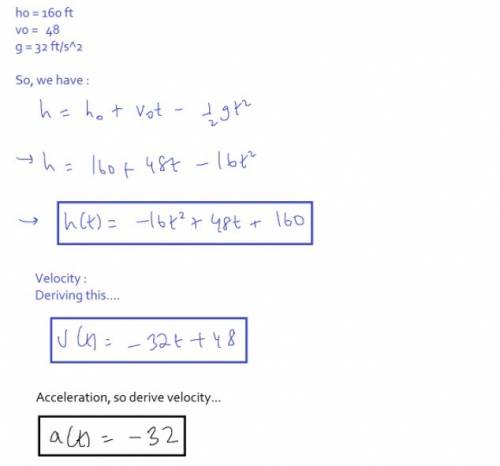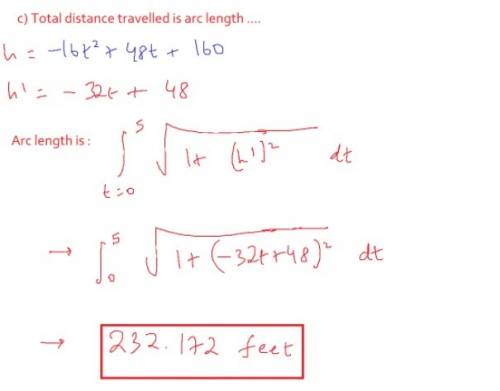
Physics, 13.07.2019 18:50, graymonky12
Suppose a person standing on the top of a building of 160 ft high throws a ball directly upward with an initial speed of 48 ft/s. a. find the ball's height, velocity and acceleration at time t. b. when does the ball hit the ground and what is its impact velocity? c. how far does the ball travel during its fligh

Answers: 1
Other questions on the subject: Physics

Physics, 21.06.2019 17:10, rebecca0022
Aspring with a mass of 2 kg has a damping constant 14 kg/s. a force of 3.6 n is required to keep the spring stretched 0.3 m beyond its natural length. the spring is stretched 0.6 m beyond its natural length and then released. find the position of the mass at any time t. (assume that movement to the right is the positive x-direction and the spring is attached to a wall at the left end.)
Answers: 3

Physics, 22.06.2019 09:00, winterblanco
The pressure proportional to the area a- inversely b- directly c- increase d-decrease
Answers: 2

Physics, 22.06.2019 09:00, jaeana
Abicycle slows down when the rider applies the brakes. what type of energy transformation is involved in this example? a. kinetic energy into heat energy b. heat energy into potential energy c. potential energy into kinetic energy d. kinetic energy into mechanical energy
Answers: 1

Physics, 22.06.2019 14:00, 6224968918
Select for each of the following statements whether it is correct or incorrect. (a) in an isothermal expansion of an ideal gas. (b) the temperature remains constant. (b) the pressure remains constant. (c) there is work done by the gas. (d) there is heat added to the gas. (e) the change in internal energy equals zero.
Answers: 1
Do you know the correct answer?
Suppose a person standing on the top of a building of 160 ft high throws a ball directly upward with...
Questions in other subjects:





Social Studies, 03.07.2019 02:50

Mathematics, 03.07.2019 02:50

History, 03.07.2019 02:50

English, 03.07.2019 02:50










